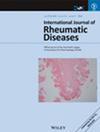Age- and Gender-Specific Dynamics of Hyperuricemia: A Longitudinal Community Study on Metabolic Trajectories and Comorbidity Stratification
Abstract
Objective
This longitudinal study investigated age- and gender-specific disparities in hyperuricemia and their metabolic associations in a community-based cohort, addressing gaps in long-term uric acid trajectory data.
Methods
A prospective cohort of 465 adults (123 males, 342 females) was stratified by serum uric acid (SUA > 420 μmol/L) and followed annually for 3 years. Standardized assessments included anthropometric, biochemical, and clinical evaluations.
Results
Males had a 3.8-fold higher hyperuricemia prevalence than females (39.84% vs. 10.53%, p < 0.001), with age-specific peaks in males (20–29 and > 60 years) and females (> 60 years). Hyperuricemic individuals exhibited elevated BMI (24.75 ± 3.38 vs. 22.43 ± 3.01 kg/m2, p < 0.001), systolic blood pressure (SBP: 124.62 ± 16.42 vs. 118.25 ± 14.99 mmHg, p = 0.001), fasting glucose (FBG: 5.48 ± 0.79 vs. 5.25 ± 0.80 mmol/L, p = 0.013), and renal dysfunction markers (serum creatinine: 74.10 ± 16.57 vs. 59.24 ± 14.68 μmol/L, p < 0.001). Age-stratified comorbidity patterns showed dyslipidemia predominance in younger groups (58.82%) versus cardiorenal complications hypertension (31.03%), elevated FBG (41.38%) and renal impairment (75.86%) in older adults. Multivariate analysis identified age, sex, BMI, and lipid profiles as SUA determinants (β = −0.248 to 0.472, p < 0.05), with eGFR inversely associated (β = −0.273, p < 0.05). Longitudinal data revealed alanine aminotransferase (ALT) as a novel predictor (β = 0.125, p = 0.038), while baseline hyperuricemia did not predict long-term SUA.
Conclusion
Hyperuricemia demonstrates significant age- and gender-related disparities, with persistent metabolic abnormalities contributing to cardiorenal and hepatic risks. Younger populations face dyslipidemia and liver dysfunction, whereas older adults exhibit hypertension and renal impairment. Regular monitoring and age-specific interventions are critical for mitigating metabolic syndrome progression.

 求助内容:
求助内容: 应助结果提醒方式:
应助结果提醒方式:


